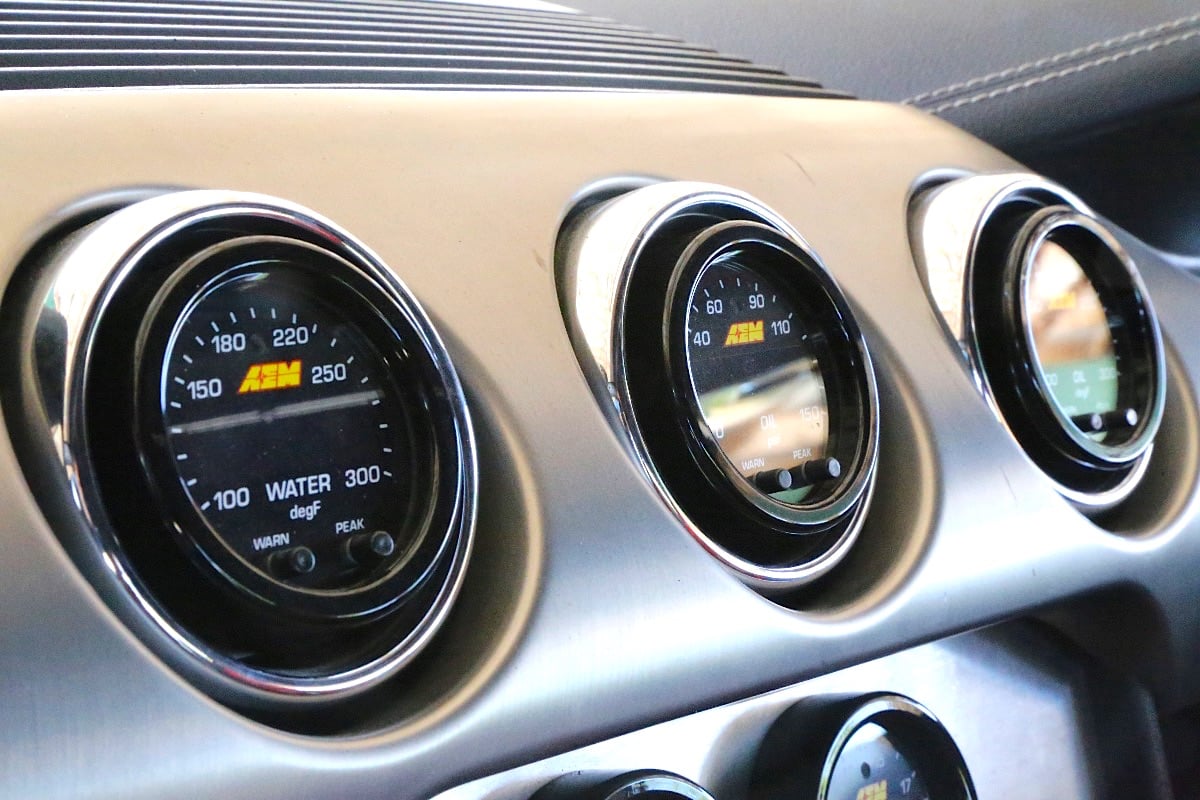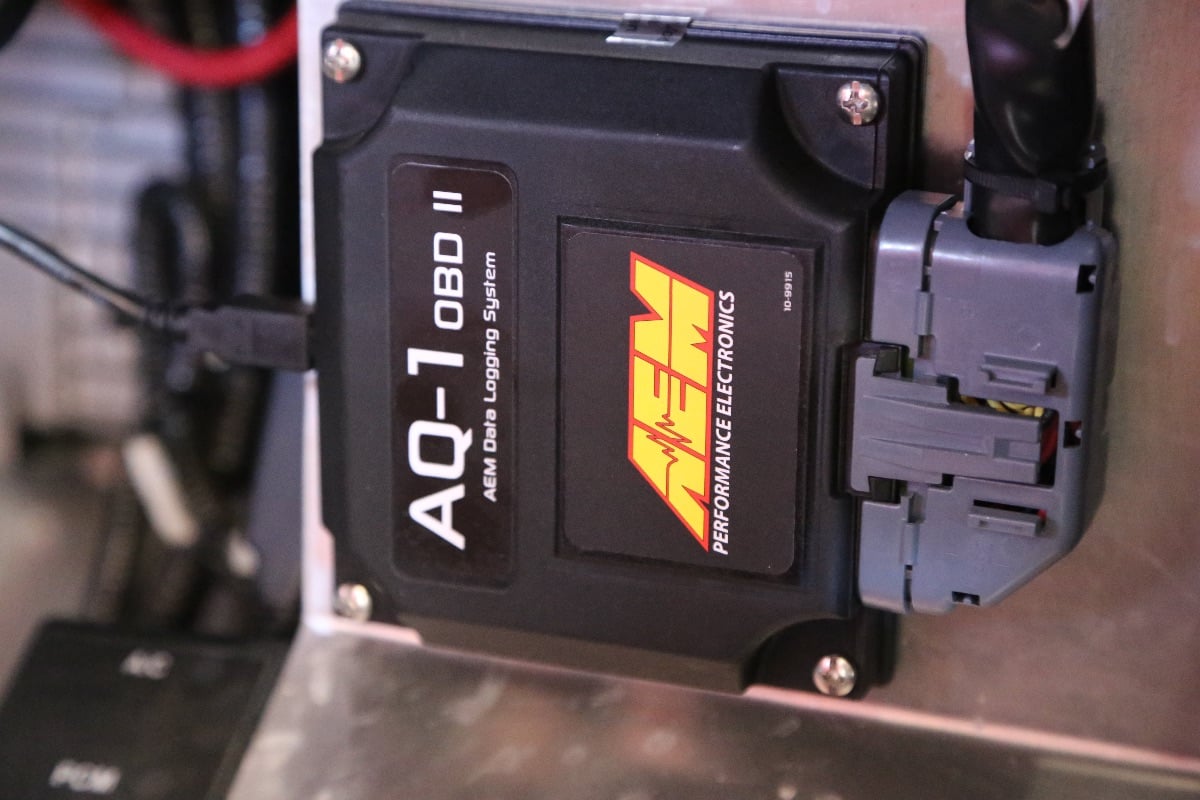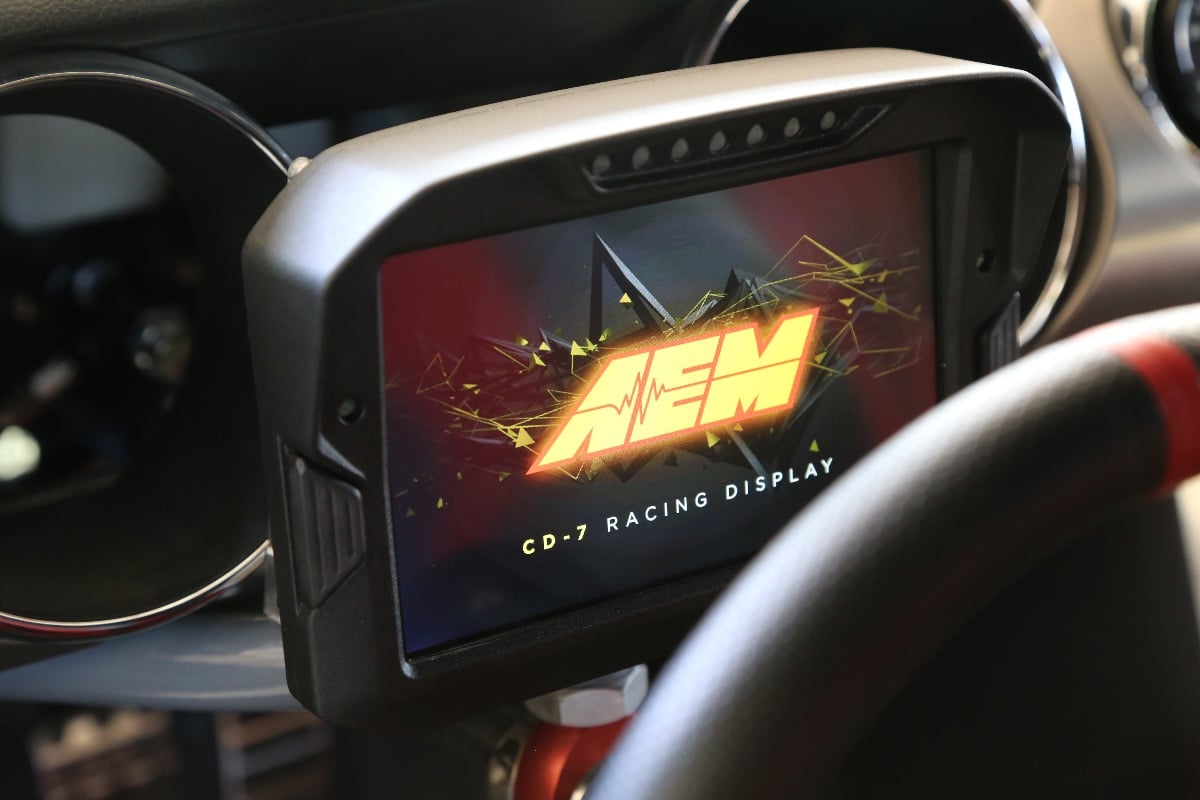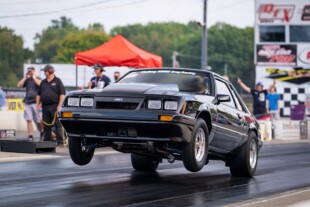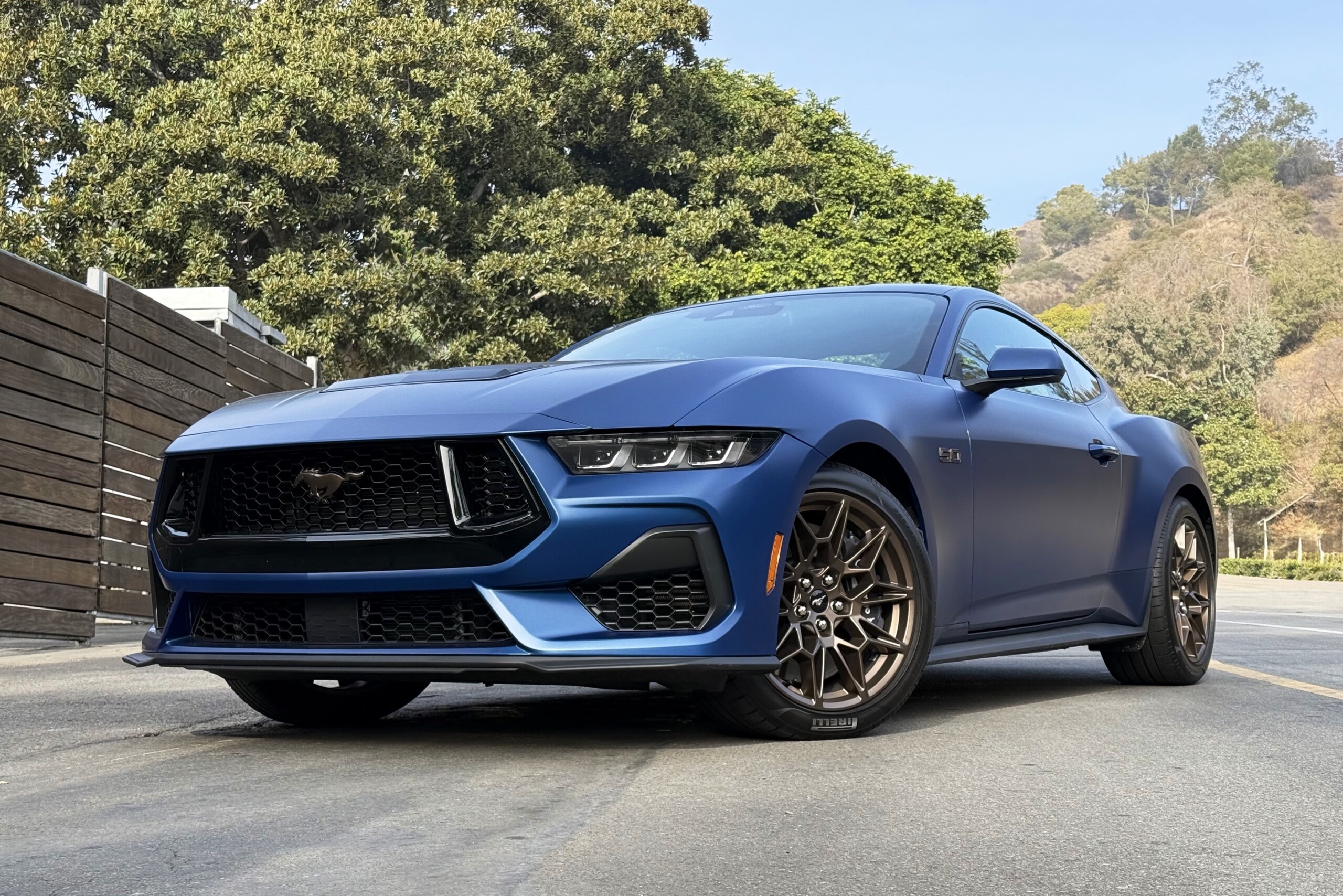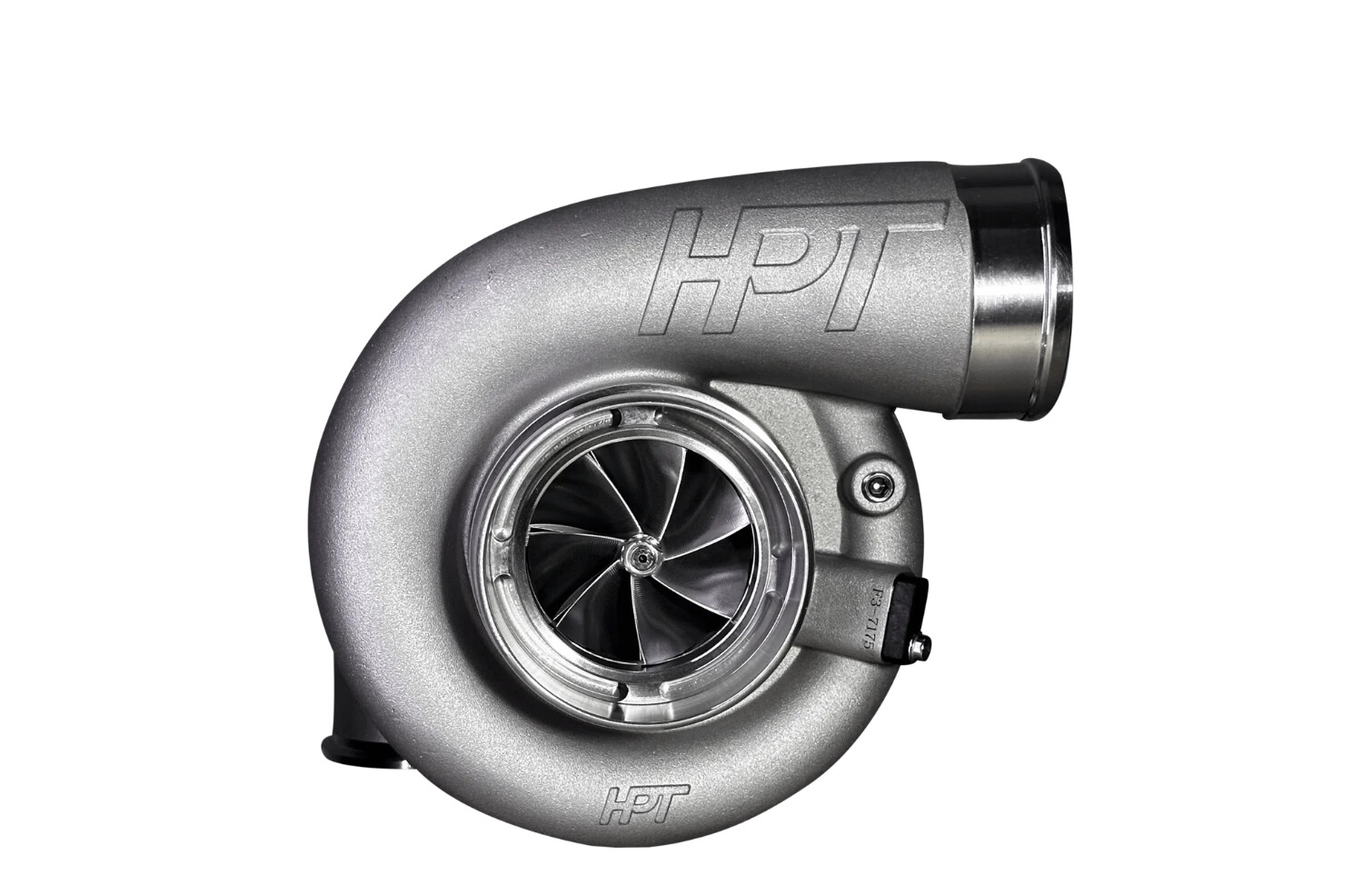Justin Pawlak slides around the Formula Drift circuit in a 2017 Roush Mustang powered by a supercharged Coyote. Boosted by a 2.3-liter TVS supercharger, its Ford Performance Aluminator 5.0-liter is good for nearly 1,000 horsepower and over 800 lb-ft of torque.
With that kind of power onboard, you might assume an exotic aftermarket EFI system is at the helm of its fuel and timing commands. That’s not the case. Justin’s car still runs a factory PCM loaded with a custom calibration from VMP Performance. This setup performs well, but it does limit the amount of data that he can log after a run.

Looking for more data to improve his drift Mustang’s performance, Justin Pawlak added an AQ-1 OBD-II datalogger and X-Series gauges. This setup allows him to record OBD-II and gauge data for post-run analysis.
Justin wanted a way to not only tap into the data flowing out of the OBD-II port, but also add in a several additional channels. That’s why he turned to AEM. He brought his competition drifter into the company’s Hawthorne, California, headquarters where its engineering team installed the AQ-1 OBD-II datalogger and X-Series gauges.
“(We) daisy-chained them up and took the last one in the chain and plugged it into the AQ-1,” the video above explains. “Then we went into the software and set the software up to log and receive those channels. Once the session is over, we can go in and download the data and see all the data from the gauges over AEMnet, rather than having to use analog inputs.”
Justin’s drift ’Stang is equipped with a full complement of AEM gear, including the AQ-1 datalogger, CD-7 dash, and seven different X-series gauges.
That is the beauty of the AEMnet’s CAN bus connection, which allows adding numerous inputs in addition to the OBD-II channels and the eight analog inputs standard on the AQ-1 OBD-II datalogger.
For more on this unit, you can check out our story here or visit the AEM site here, and for more on Justin’s Mustang, stay tuned to this site for a full feature.



